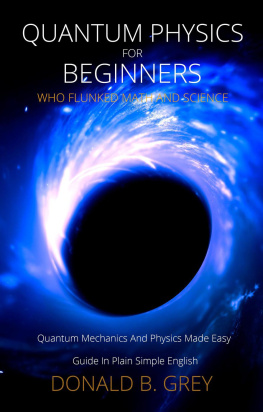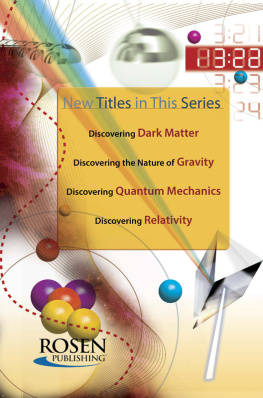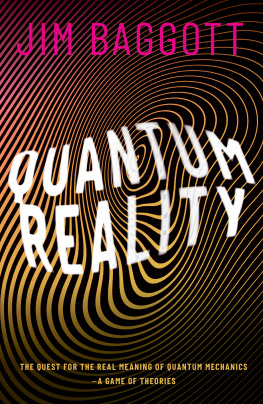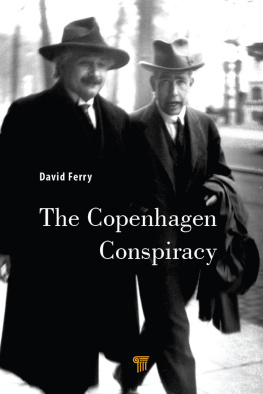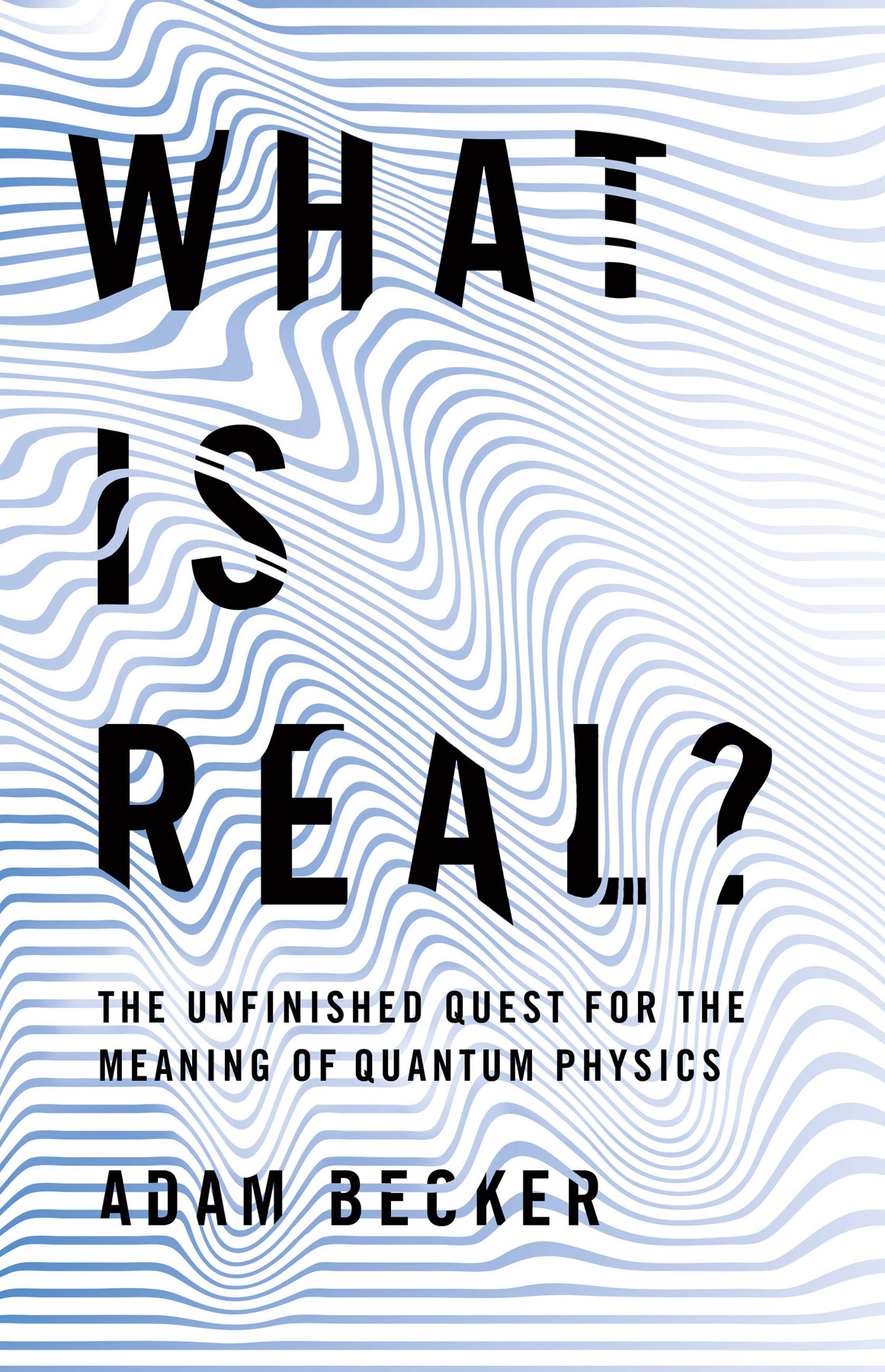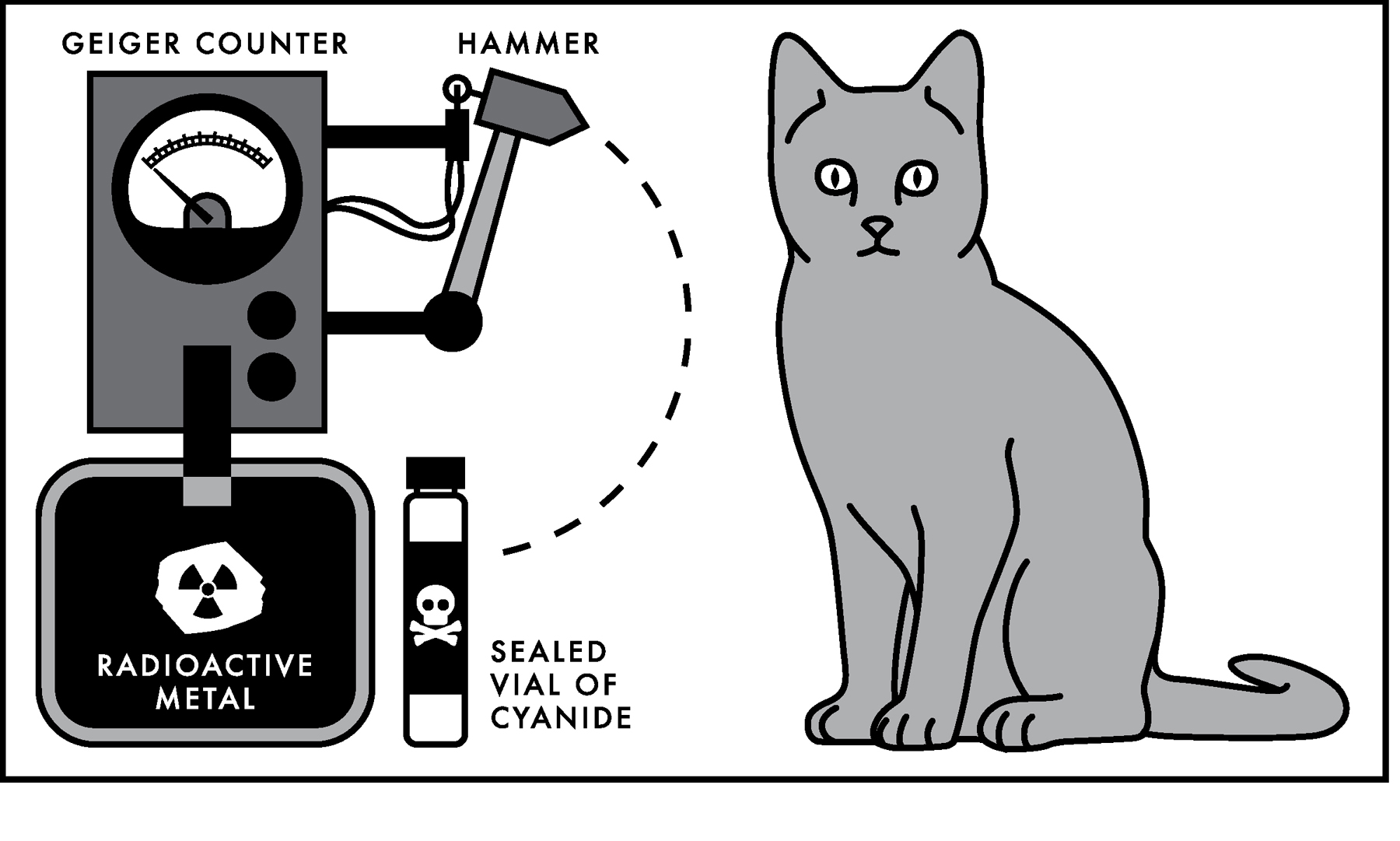Copyright 2018 by Adam Becker
Hachette Book Group supports the right to free expression and the value of copyright. The purpose of copyright is to encourage writers and artists to produce the creative works that enrich our culture.
The scanning, uploading, and distribution of this book without permission is a theft of the authors intellectual property. If you would like permission to use material from the book (other than for review purposes), please contact permissions@hbgusa.com. Thank you for your support of the authors rights.
Basic Books
Hachette Book Group
1290 Avenue of the Americas, New York, NY 10104
www.basicbooks.com
First Edition: March 2018
Published by Basic Books, an imprint of Perseus Books, LLC, a subsidiary of Hachette Book Group, Inc. The Basic Books name and logo is a trademark of the Hachette Book Group.
The publisher is not responsible for websites (or their content) that are not owned by the publisher.
Every effort has been made to determine the rights holders for the photographs and excerpts that appear in this book.
The Library of Congress has cataloged the hardcover edition as follows:
Names: Becker, Adam, 1984 author.
Title: What is real? : the unfinished quest for the meaning of quantum physics / Adam Becker.
Description: First edition. | New York : Basic Books, [2018] | Includes bibliographical references and index.
Identifiers: LCCN 2017043844 (print) | LCCN 2017059314 (ebook) | ISBN 9780465096060 (ebook) | ISBN 9780465096053 (hardcover)
Subjects: LCSH: Quantum theoryHistory.
Classification: LCC QC173.98 (ebook) | LCC QC173.98.B43 2018 (print) | DDC 530.12/09dc23
LC record available at https://lccn.loc.gov/2017043844
ISBNs: 978-0-465-09605-3 (hardcover); 978-0-465-09606-0 (ebook)
E3-20180221-JV-PC
For Elisabeth, who always knew.
The author acknowledges with gratitude the support of the Alfred P. Sloan Foundation in the research and writing of this book.
The soundest fact may fail or prevail in the style of its telling.
Ursula K. Le Guin
T he objects in our everyday lives have an annoying inability to appear in two places at once. Leave your keys in your jacket, and they wont also be on the hook by the front door. This isnt surprisingthese objects have no uncharted abilities or virtues. Theyre profoundly ordinary. Yet these mundane things are composed of a galaxy of the unfamiliar. Your house keys are a temporary alliance of a trillion trillion atoms, each forged in a dying star eons ago, each falling to Earth in its earliest days. They have bathed in the light of a violent young sun. They have witnessed the entire history of life on our planet. Atoms are epic.
Like most epic heroes, atoms have some problems that ordinary humans dont. We are creatures of habit, monotonously persisting in just one location at a time. But atoms are prone to whimsy. A single atom, wandering down a path in a laboratory, encounters a fork where it can go left or right. Rather than choosing one way forward, as you or I would have to do, the atom suffers a crisis of indecision over where to be and where not to be. Ultimately, our nanometer Hamlet chooses both. The atom doesnt split, it doesnt take one path and then the otherit travels down both paths, simultaneously, thumbing its nose at the laws of logic. The rules that apply to you and me and Danish princes dont apply to atoms. They live in a different world, governed by a different physics: the submicroscopic world of the quantum.
Quantum physicsthe physics of atoms and other ultratiny objects, like molecules and subatomic particlesis the most successful theory in all of science. It predicts a stunning variety of phenomena to an extraordinary degree of accuracy, and its impact goes well beyond the world of the very small and into our everyday lives. The discovery of quantum physics in the early twentieth century led directly to the silicon transistors buried in your phone and the LEDs in its screen, the nuclear hearts of the most distant space probes and the lasers in the supermarket checkout scanner. Quantum physics explains why the Sun shines and how your eyes can see. It explains the entire discipline of chemistry, periodic table and all. It even explains how things stay solid, like the chair youre sitting in or your own bones and skin. All of this comes down to very tiny objects behaving in very odd ways.
But theres something troubling here. Quantum physics doesnt seem to apply to humans, or to anything at human scale. Our world is a world of people and keys and other ordinary things that can travel down only one path at a time. Yet all the mundane things in the world around us are made of atomsincluding you, me, and Danish princes. And those atoms certainly are governed by quantum physics. So how can the physics of atoms differ so wildly from the physics of our world made of atoms? Why is quantum physics only the physics of the ultratiny?
The problem isnt that quantum physics is weird. The world is a wild and wooly place, with plenty of room for weirdness. But we definitely dont see all the strange effects of quantum physics in our daily lives. Why not? Maybe quantum physics really is only the physics of tiny things, and it doesnt apply to large objectsperhaps theres a boundary somewhere, a border beyond which quantum physics doesnt work. In that case, where is the boundary, and how does it work? And if there is no such boundaryif quantum physics really applies to us just as much as it applies to atoms and subatomic particlesthen why does quantum physics so flagrantly contradict our experience of the world? Why arent our keys ever in two places at once?

E ighty years ago, one of the founders of quantum physics, Erwin Schrdinger, was deeply troubled by these problems. To explain his concerns to his colleagues, he devised a now-famous thought experiment: Schrdingers cat (Geiger counter, which detects radioactivity, and that counter would be pointed at a tiny lump of slightly radioactive metal. This Rube Goldberg contraption would be set off the moment the metal emitted any radiation; once that happens, the Geiger counter would register the radiation, which would release the hammer, smashing the vial and killing the cat. (Schrdinger had no intention of actually conducting this experiment, to the SPCAs relief.) Schrdinger proposed leaving the cat in the box for a certain period of time, then opening the box to find the cats fate.
Figure I.1. Schrdingers cat. When the metal gives off radiation, the Geiger counter will register it and drop the hammer, releasing the cyanide and killing the cat.
The radiation emitted by the lump of metal is composed of subatomic particles, breaking away from the atoms in the metal and flying off at high speeds. Like all sufficiently tiny things, those particles obey the laws of quantum physics. But, instead of reading Shakespeare, the subatomic particles in the metal have been listening to the Clashat any particular moment, they dont know whether they should stay or they should go. So they do both: during the time the box is closed, the indecisive lump of radioactive metal will and wont emit radiation.
Thanks to these punk-rock particles, the Geiger counter will and wont register radiation, which means the hammer will and wont smash the vial of cyanideso the cat will be both dead and alive. And this, Schrdinger pointed out, is a serious problem. Maybe an atom can travel down two paths at once, but a cat certainly cant be both dead and alive. When we open the box, the cat will be either dead or alive, and it stands to reason that the cat must have been one or the other the moment before we opened the box.


